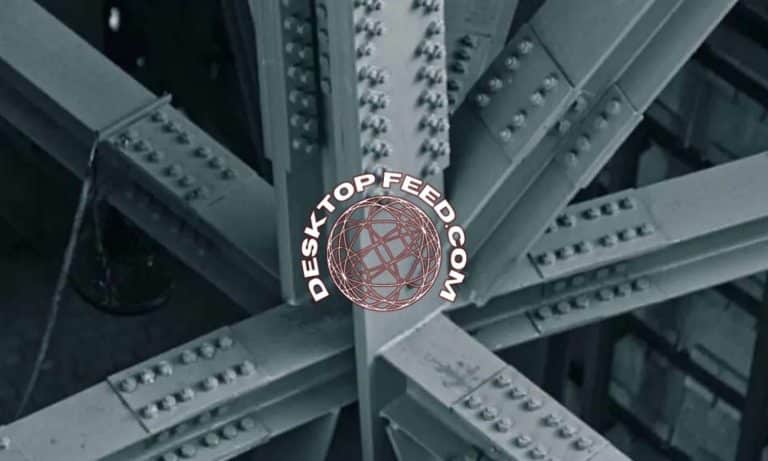How Can Fleet Management Save Money in Your Business?

Fleet management can save your business money in a number of ways. Some of these ways include reduced fuel consumption, better routing and dispatching, and improved maintenance. Ultimately, fleet managers can reduce costs while increasing the productivity of their teams. If you’re wondering how to get started, here are a few things you can do.
Reduced fuel consumption – Fleet Management
Increasing costs for fuel have made it harder for businesses to make a profit. In order to avoid this problem, businesses need to know how to reduce fuel consumption and keep detailed records. By doing so, they can save money and improve productivity. However, reducing fuel consumption requires effort and time. However, it is not impossible if you know how to do it.
One way to reduce fuel consumption is to slow down when driving. This will save money and improve driver safety, as speeding accounts for more than 25% of fatal accidents. Additionally, slowing down can reduce drag on vehicles. This can be accomplished by selecting the right tires and aerodynamic body accessories.
Another way to reduce fuel consumption is to train drivers to drive more efficiently. Drivers should be given regular training sessions, and rewards should be offered to drivers who demonstrate better driving practices. Drivers can save more than 30% of their fuel costs when they drive more eco-friendly. This will also improve the safety of drivers, and reduce the wear and tear on vehicles.
You can also reduce fuel consumption by paying attention to vehicle maintenance. For instance, keep tires inflated and check the air filter. Regular maintenance and regular oil changes will ensure that your vehicle is running more efficiently. Lastly, reduce the amount of time you spend at the gas station. Using public transportation when possible will save money on fuel.
Improved routing and dispatching
There are many advantages of using an autonomous dispatch and routing solution in your business. This type of system can help your business save time and money by optimizing routes and managing fleet operations. Moreover, it can help you prepare for the unforeseen. It can give you a clear view of the time and distance of every delivery task.
The most important thing to remember while choosing a dispatch solution is the level of automation it can provide for your business. The right system will allow your dispatchers to monitor all assets and tasks in real time. It will also provide the right tools to keep track of fuel expenses and driving habits of drivers. In addition, it will enable your business to send the right resources to the right places in the right time, saving you a lot of time.
The process of transportation dispatching used to be time-consuming and costly. With the implementation of an intelligent routing system, dispatchers could import orders in bulk and handle thousands of orders. The dispatchers’ work became much easier and more efficient, increasing on-time delivery rates by 1.5% month-over-month. The software also shortened dispatchers’ planning time by more than 800%. Moreover, the system also automatically takes into account delivery time windows and real-world restrictions.
Another important benefit of an automated scheduling system is the ability to manage dispatchers and partners. This allows businesses to better assess their providers and partners. Automated scheduling allows dispatchers to react to delays in real-time, resulting in more timely deliveries.
Also Read: How to Plan a Business Expo Or Business Event
Reduced idling time
If your heavy-duty fleet idles excessively, you may be paying more for fuel and maintenance than you realize. By reducing idling time, you can save money and save the environment. Studies have shown that idling vehicles waste about six billion gallons of fuel annually.
In addition to saving money on fuel, reduced idling time can also cut vehicle wear and tear and optimize delivery routes. Most fleet owners spend a large portion of their budget on fuel and vehicle maintenance. It’s important to create a baseline so you can monitor changes over time. By using software that monitors idle time, you’ll know exactly what machines and operators are causing idle time. By tracking the number of days that equipment sits idle, you’ll be able to make the appropriate changes.
If you have a fleet of ten to twenty trucks, reducing idle time can save thousands of dollars each year. Even if you don’t have a large fleet, idle time adds up quickly. If each vehicle is idle for 10 minutes, it can cost you more than $30 per day. In the long run, this added fuel can add up to thousands of dollars. That’s why reducing idle time is crucial for your fleet.
You can reduce the amount of time your vehicles spend idling by implementing telematics. These devices collect data on the location of your vehicles and the condition of their engines. The data can then be analyzed for patterns and reduce your fleet’s idling time. By implementing these solutions, you can save money and the environment.
The top cost associated with idling time is fuel burn. Each hour your engine spends in nonproductive mode consumes approximately a gallon of fuel. When you consider the amount of fuel that your fleet consumes each year, this can add up quickly. Additionally, the extra hours in operation wears down key components of your vehicles, including engines, transmissions, and fluids. This can result in extra filter and fluid changes, which are expensive in the long run.
Improved maintenance
In order to reduce the total cost of ownership, fleet managers need to improve maintenance. The key to improving maintenance is to understand and follow the proper replacement cycle. This can be done by using economic-based replacement planning tools to estimate and optimize vehicle replacement cycles. By focusing on these factors, fleet managers can optimize the maintenance schedule, minimize vehicle maintenance costs, and improve vehicle performance.
Fleet maintenance is a complex task with many challenges. The main challenges include a lack of communication, and time-consuming paperwork. By using a mobile device to create work orders and monitor their progress, fleet managers can increase efficiency. These tools can also help improve communication between technicians and managers.
In order to make this program effective, fleet managers must make it a top priority. This includes the COO and CEO, who must promote the safety program throughout the company. Overhead costs include management and administrative staff, fuel sites, computer systems, tools, and taxes. There is no formula to determine what percentage of the Fleet budget is spent on overhead, but Activity Based Costing (ABC) can be a helpful tool for identifying costs.
Fuel costs are one of the highest expenses in fleets. Research indicates that nearly five-fifths of fleets exceed their fuel budgets. Unexpected traffic congestion and inefficient route planning are the leading causes of unbudgeted fuel use. Fortunately, there are some simple ways to reduce fuel costs.
Improved maintenance is critical to the overall operation of a fleet. Using telematics, fleet managers can set and maintain a maintenance schedule based on historical trends and the current needs of their fleet. Telematics software can also monitor key vehicle parameters such as engine temperature, oil pressure, battery voltage, and accelerometer data.
Improved customer service
Fleet management is a valuable tool for businesses. The ability to monitor your employees’ vehicle usage allows you to better manage your fleet and ensure that they’re keeping appointments and showing up on time. In addition to ensuring that your fleet vehicles operate smoothly, fleet management can help you to increase customer satisfaction.
Fleet management helps you plan routes better and minimize fuel consumption. It also gives your staff access to detailed information about your customers. This data can help to give better customer service and help you to retain your customers. It also saves you money in the long run by helping you to maximize the resources you have.
With GPS tracking, you can better manage your fleet and improve customer satisfaction. When you can quickly respond to customer requests, you’ll have a higher chance of delivering a high-quality customer experience. In addition to tracking your drivers’ movements, you’ll have detailed data about their performance, including where they’re going and when. By improving your fleet management, you’ll improve your customer service and boost profits.
The quality of customer service is very important in the logistics industry. In fact, a study by the Aspect Consumer Experience found that 67 percent of respondents believed that a company’s customer service reflected its value. Fleet management is one of the most important tools in your customer service strategy, so make sure your vehicles are running smoothly.
Having real-time fleet tracking information means better customer service, which puts you ahead of your competition and increases revenue. Using a fleet tracking solution will also help you with route planning, which means less chance of roadblocks and more accurate ETAs. Moreover, you’ll be able to easily communicate with your drivers directly and get their updates.
For More Articles: Desktopfeed.com





